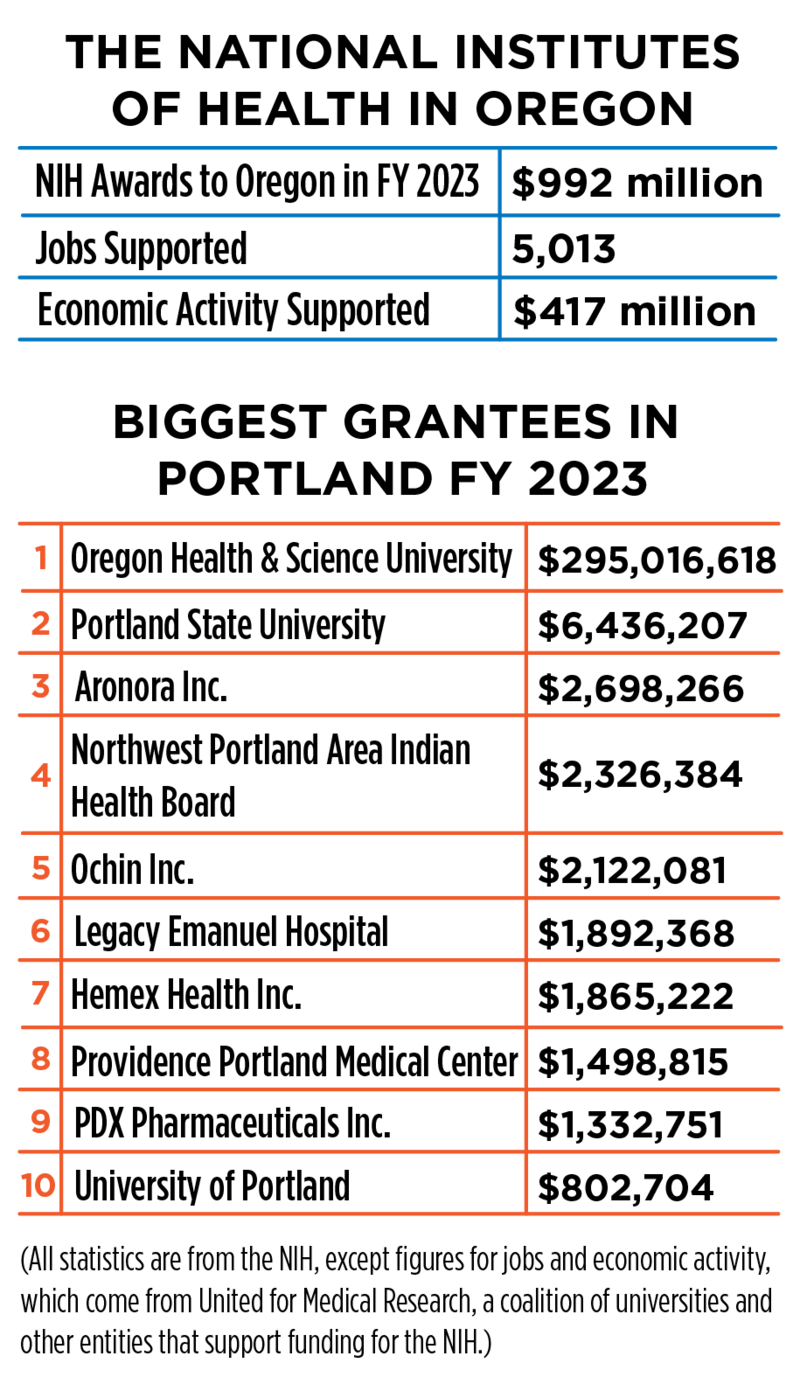Employees at Oregon Health & Science University got a scary email from the boss on Saturday. Interim president Steve Stadum interrupted any Super Bowl snack shopping to tell them that the National Institutes of Health, now under the management of President Donald Trump and rocket billionaire Elon Musk, was intent on slashing research funding for institutions like OHSU.
Starting this month, Stadum said, the NIH would cut back on the cash it hands out for “indirect costs” of scientific discovery—things like lights, heat, maintenance, insurance and clerical work needed to protect privacy in human trials, to name a few. As of Feb. 10, the NIH said, the percentage given for those things would be 15% and no more.
Institutions like OHSU negotiate percentages for indirect costs. The university’s rate has been 56% of every grant. That meant that for every $100,000 that OHSU got from the NIH to pay for researchers’ salaries and supplies, it got an additional $56,000 for overhead. At the new rate, it would get just $15,000.
In the fiscal year that ended June 30, 2024, OHSU got $277 million from the NIH, down from $295 million a year earlier. At that level, the new policy would deny OHSU about $73 million.
Stadum called the reduction “devastating.” Dr. Jeff Jensen, vice chair of research in obstetrics and gynecology at the OHSU School of Medicine, called it a “shit show.” In a statement to WW, U.S. Sen. Ron Wyden (D-Ore.) said Trump and Musk didn’t understand “even the basics of medical research budgeting.” Oregon Attorney General Dan Rayfield sued the administration.
Late Monday, a federal judge in Massachusetts granted that state’s request for a temporary restraining order blocking the cuts to NIH funding. If it holds, such research, and the jobs needed to do it, will remain intact on Pill Hill. Trump’s NIH must respond by Valentine’s Day.
Should they hold up in court, the cuts are very likely to cost jobs at OHSU and perhaps beyond. United for Medical Research, a nonprofit that advocates for NIH funding, says the agency’s dollars support more than 5,000 jobs in Oregon, fostering almost $1 billion in economic activity (see table, below).

OHSU is by far the biggest recipient of NIH funding in Oregon, but there are many others that get money from the agency, which traces its roots to a one-room laboratory set up in a government-run hospital for sailors in 1887.
In the metro area, Portland State University has gotten chunks of cash. So has Aronora Inc., a biotech company looking for cures for blood diseases. OCHIN Inc. got $2 million in fiscal 2023 to build software that connects rural health clinics to experts in urban centers.
OHSU has used NIH money to study the role of the brain’s nucleus accumbens in binge drinking and how it varies by sex, and to seek treatments for aggressive “triple negative” breast cancer. NIH funds helped OHSU scientists study whether obesity was a risk factor for severe COVID-19, and if eating meals at unusual times because of, say, shift work impairs fertility.
